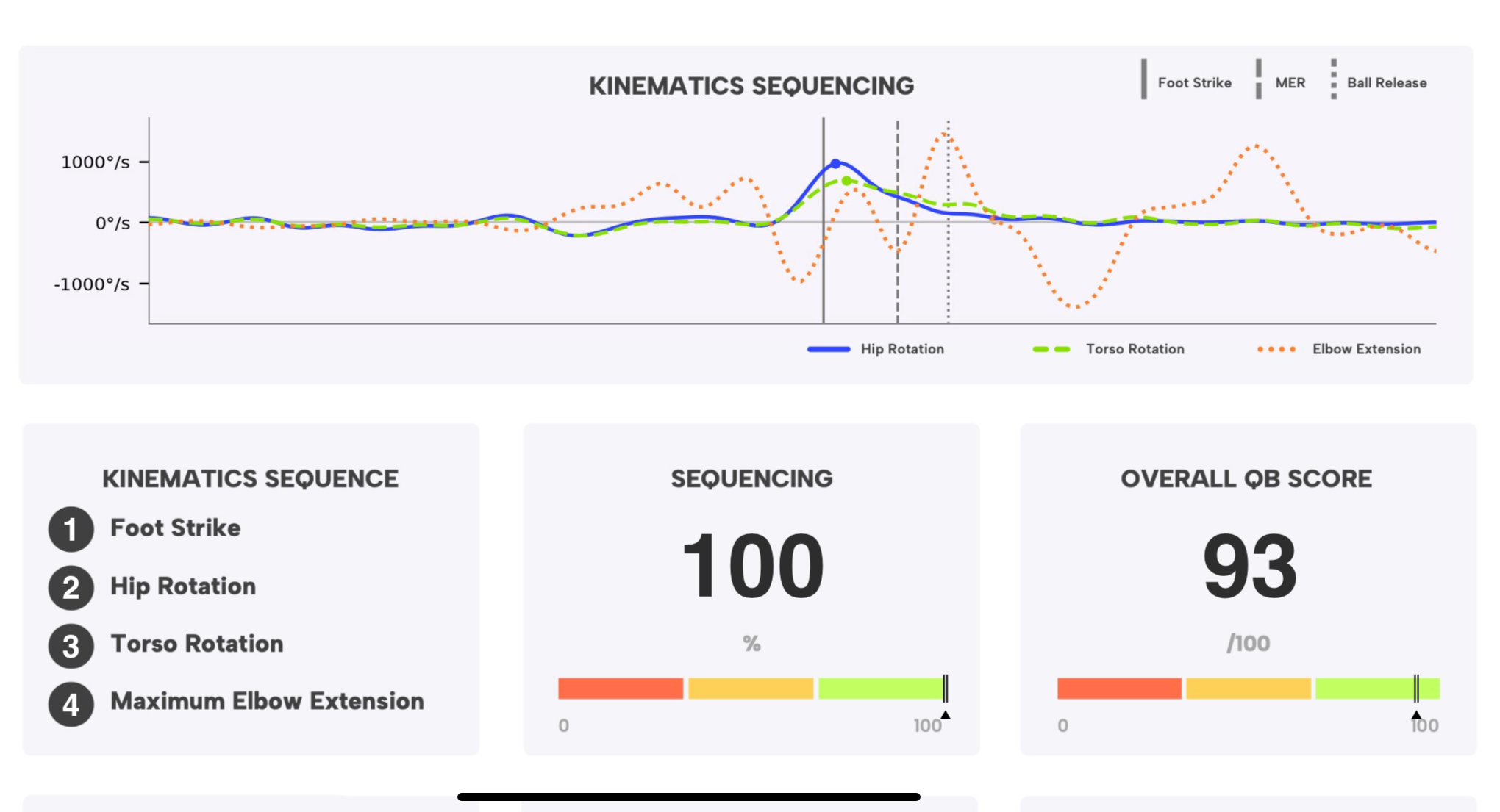Our kinematic sequence score is measuring how well you sequence from the ground up during the throw. The goal is to fire your body in subquential order to optimize efficiency through your kinetic chain.
The order that we are measuring your sequence score is: foot strike, hip rotation, torso rotation, and arm acceleration (elbow extension).
Within each phase, we are keying in on the maximum angular velocity through each segment. The reasoning behind this is that when a specific segment is firing at its maximum velocity then it is the primary driver of energy within the system at that specific moment.
For instance, when the hips are rotating at their maximum velocity then the hips are the main driver of the kinetic chain at that segment in the throw.
When looking at your graph, you want to first key in on the left-hand side of the graph. Note that we are measuring angular velocity (degrees per second). This is a velocity based graph. We are not measuring angles. One common misconception is that the peak is in reference to the angle of the joint. Remember, the peak is when the specific joint is moving the fastest, and is not about the position of the joint.
Next, identify the 3 vertical lines to orient yourself to the phases of the throw. The first line corresponds to foot strike, the second line to MER (maximum external rotation in throwing shoulder), and the third line to ball release.
After this, you want to look for the “solid” dots on each part of the graph. These dots correspond to “peak velocity” for hip rotation, torso rotation, and elbow extension. These dots should go in subquential order following foot strike.
Lastly, you want to look at the timing of peak velocities. Ideally, you want peak hip rotation speed to start quickly after foot strike. A delay in peak hip rotation velocity is often due to “sliding” of the hips instead of “rotating”.

If either of the below pertain to you, then you need to significantly improve mobility: